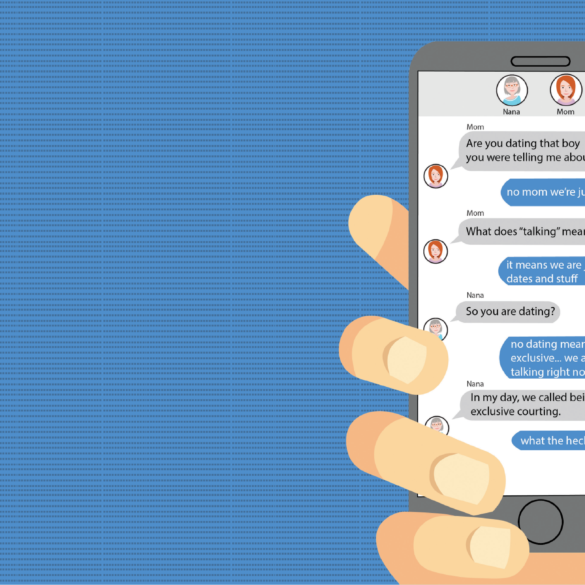New slang cultures among young people can seem unfamiliar to their parents and grandparents.
Language differences go beyond Millennial not understanding their dads’ cheesy jokes. A lot of the differences in the ways teens and young adults talk today compared to their parents and grandparents seem to be centered around how technology is used for communication.
Generation by generation, language changes, and it can be difficult for people of different ages to fully understand one another.
For Millennials and Generation Z, unique language consists of more than slang. The popularity of texting has led to the rise of emoticons, more affectionately known as emojis. These tiny pictures changed the game for allowing people to express emotion through text. According to Emojipedia, there are 2,823 emojis in the Unicode Standard. That’s 2,823 emotions, scenarios, or stories that can be relayed via images.
Younger generations also differ from their parents in common slang. Shortened words and phrases, such as “gucci” and “smh,” are often used as shortcuts in texts, tweets, Snapchats, or Instagram posts. There are also generational differences in the ways objects and circumstances are defined.
In discussing relationships, for example, young people today might say that going on dates and texting someone regularly is “talking,” while parents and grandparents would classify that as “dating” someone. This discrepancy in definitions can make it difficult to explain a relationship status to family members without follow-up questions.
Jeff Grabill, a professor professional writing from Michigan State University, believes that even without new ways of communicating through the use of technology, society would still be developing new terms. People stopped using words like “shall” and “forsooth” long before the technology of today was invented. So, concerning slang and new language in general, technology can’t take all the credit. Communication naturally evolves, whether or not it’s happening through screens.
Language differences go beyond Millennial not understanding their dads’ cheesy jokes. A lot of the differences in the ways teens and young adults talk today compared to their parents and grandparents seem to be centered around how technology is used for communication.
Generation by generation, language changes, and it can be difficult for people of different ages to fully understand one another.
For Millennials and Generation Z, unique language consists of more than slang. The popularity of texting has led to the rise of emoticons, more affectionately known as emojis. These tiny pictures changed the game for allowing people to express emotion through text. According to Emojipedia, there are 2,823 emojis in the Unicode Standard. That’s 2,823 emotions, scenarios, or stories that can be relayed via images.
Younger generations also differ from their parents in common slang. Shortened words and phrases, such as “gucci” and “smh,” are often used as shortcuts in texts, tweets, Snapchats, or Instagram posts. There are also generational differences in the ways objects and circumstances are defined. In discussing relationships, for example, young people today might say that going on dates and texting someone regularly is “talking,” while parents and grandparents would classify that as “dating” someone. This discrepancy in definitions can make it difficult to explain a relationship status to family members without follow-up questions.
Jeff Grabill, a professor of digital communication from Michigan State University, believes that even without new ways of communicating through the use of technology, society would still be developing new terms. People stopped using words like “shall” and “forsooth” long before the technology of today was invented. So, concerning slang and new language in general, technology can’t take all the credit. Communication naturally evolves, whether or not it’s happening through screens.
This story was originally published in the fall 2018 print edition.




